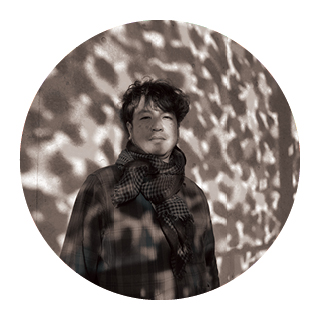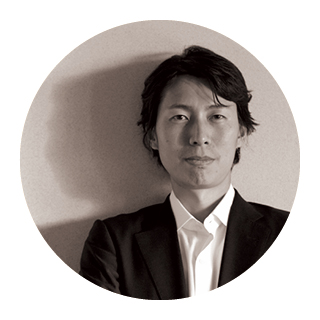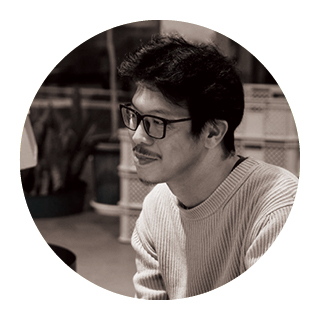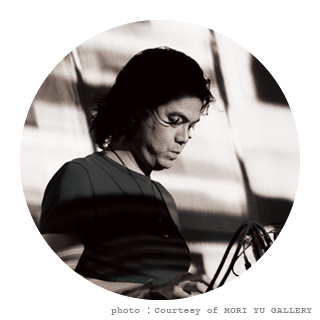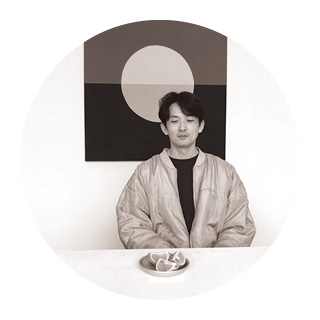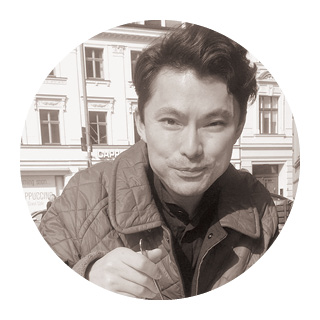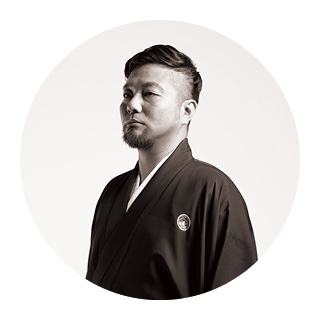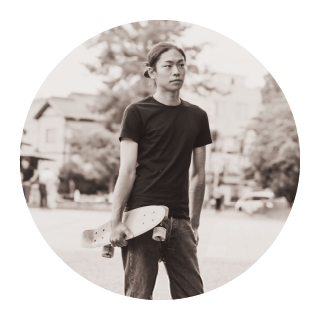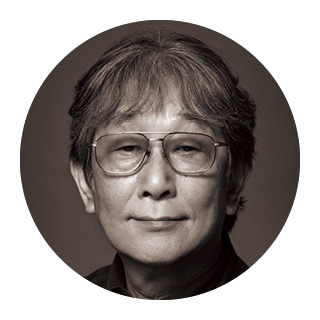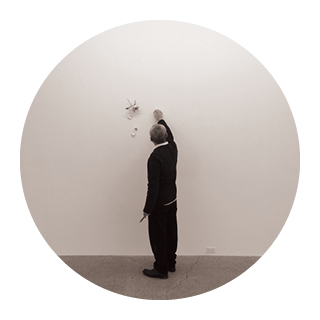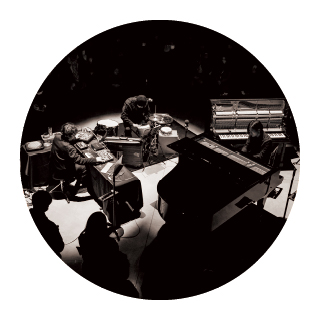
谷敷謙
Ken Yashiki1983年、東京都生まれ。その後、初等教育が始まるまでの幼少期をアメリカのカリフォルニア州サンディエゴで過ごす。帰国後に服飾を学び、20代の大半をアパレルシーンに身を置き、アーティストとしてのキャリアをスタートした。
現在は、木目込みという日本固有のテキスタイルの技術をペインティングの手法として捉え直し、新しい絵画表現に取り組む。顔料や絵筆を用いて描く一般的な絵画とは異なり、実際に誰かが着用していた衣類をメディウムにする。素材となる衣服の持ち主と対話し、過去から現在に至る人物像を解釈し作品に昇華。衣類に染み込んだ匂い、汚れやほつれなどの生活感、製作・販売したデザイナーやブランドが紡いできた衣服の来歴、つまり「作る」「売る」「着る」といった素材にまつわる凡ゆる記憶を絵画の要素として扱う。
描かれた人物は、顔の造形や細かな骨格、肉付きといった個人を特定する身体性が徹底的に削ぎ落とされてはいるが、実際に誰かが身につけ、生活をともにしていた衣類を使うことで、生々しいまでのリアリティを感じさせる。「誰かの人生の抜け殻」である衣類によって「誰かの存在を証明」し、絵画という形態に置換することで「語り継ぐ」。同時に、祈りや願いを込めるという木目込みや伝統工芸の特有の文化や価値を、現代へとリプレイスしている。
Yashiki (b.1983) was born in Japan and spent his childhood in San Diego, California, USA. After returning to Japan, he studied fashion and spent most of his twenties in the apparel scene before embarking on a career as an artist.
He uses a technique called “Kimekomi,” Japan’s unique textile technique of wood grain as a painting method and works on a new form of pictorial expression. Unlike general paintings that use pigments or paintbrushes, the medium is made from clothing that was actually worn by someone else. Yashiki starts by talking to the owner of the garment, researching the past and present, and interpreting the owner’s personality. The smells that the owner’s life has imbued into the garment, the memories of life such as stains and frayed edges, and the history of the garment spun by the designer or brand that produced and sold it. In other words, he treats even the ordinary memories associated with materials such as “”making”” “”selling”” and “”wearing”” as elements of his paintings. The physicality that identifies the individual, such as facial features, detailed skeletal structure, and flesh, is thoroughly eliminated from the painted figures, but the use of clothing that someone actually wore and lived with gives a vivid sense of reality. Yashiki dares to focus on fundamental points in the history of portraiture by “Preserving the fact that something or someone existed” through clothing, which is “the remains of someone’s life,” and “pass it on” by replacing it with the form of painting, at the same time re-placing the unique culture and value of “Kimekomi” technique and traditional crafts where prayers and wishes are engraved into the modern days.
作品タイトル
-PAUSE- Usa Usa
-PAUSE- Kuma Kuma
ステートメント
私は木目込みというテキスタイルを埋め込む技法で制作をしています。
木目込みとは、今から300年前の日本の江戸時代に賀茂別雷神社の宮大工をしていた高橋忠重が、柳筥を作った時の端材を削った人形が木目込み人形の始まりです。日本の家庭では、雛祭りに飾るお雛様が一般的に木目込み人形になっていきました。
身代わりの型を水で流し災厄を祓う風習だったものが、子供の枕元に人形を置いて穢れを移すことへと変わり、現在では飾る事で厄を祓う形へと変化してきたのが木目込み雛人形の成り立ちです。
このように木目込みという技法で作り上げられるものは、神への器から、親から子へ孫へと命を繋げる願いの器へと変化しているように私は感じます。
当初は我が子の生きている証を、娘が着ていた古着を用い、彼女の特徴を誇張した姿勢(PAUSE)のキャラクターで集積させ留めて存在証明していました。親から見るその作品は彼女の過去が一時停止(PAUSE)して一同に集まり、現在の彼女が確かに存在していることを実感でき、目の前にいる彼女と作品を見ることでこの先の彼女を想像することができました。
身につけていたそれぞれの人のストーリーを持つ古着のテキスタイルを使って現代的にアレンジすることで、今を生きる人々の姿を表現し、伝統技法に込められた生命への祈りや願いも重ねて制作しております。
I work with a technique called Kimekomi, in which textiles are embedded. Kimekomi dolls were first made 300 years ago in the Edo period (1603-1868) by Tadashige Takahashi, a master carpenter at Kamowakeikaduchi-jinja Shrine, from scraps of wood he had used to make willow boxes. Nowadays, Japanese households have generally turned to Kimekomi dolls for their Hina Matsuri (Girls’ Festival) decorations.
The custom of casting a substitute doll with water to purge bad luck has changed to placing the doll by the child’s bedside to transfer the dirt, and now the Kimekomi dolls are displayed to purge bad luck. I feel that the Kimekomi dolls have changed from being vessels for the gods to vessels of wishes to connect the lives of parents to their children and grandchildren.
At first, I used old clothes that my daughter used to wear to prove that my child was alive, and I accumulated her characteristics in a character of exaggerated posture (PAUSE) to prove her existence. The work, as seen from the parent’s point of view, brought her past together in PAUSE, allowing the viewer to realize that she is indeed present in the present, and to imagine her in the future by looking at the work with her in front of them.
By using textiles of old clothes that have stories of the people who wore them and arranging them in a modern way, I express the people who live today, and also overlap the prayers and wishes for life that are contained in traditional techniques.
(Message from Ken Yashiki / translated from Japanese)
展示作品
《-PAUSE- Usa Usa》2016年、木目込み、子供の着られなくなった服、スタイロフォーム、 特殊捺染、つけまつ毛、162×162 cm
《-PAUSE- Kuma Kuma》2018年、木目込み、子供の着られなくなった服、スタイロフォーム、 特殊捺染、つけまつ毛、113.5×113.5 cm
《-PAUSE- Usa Usa》2016, wood grain, clothes that can no longer be worn by children, Styrofoam, special textile printing, false eyelashes, 162×162 cm
《-PAUSE- Kuma Kuma》2018, wood grain, clothes that can no longer be worn by children, Styrofoam, special textile printing, false eyelashes, 113.5×113.5 cm


